Ultimate Guide to Marketing Automation: Implementation, Processes, & Best Practices
Today, most brands are already using marketing automation in some form. However, to unleash the full power of marketing automation, it is vital to understand the complete scope of what it can help you achieve. Read on to get an A-to-Z guide to marketing automation.
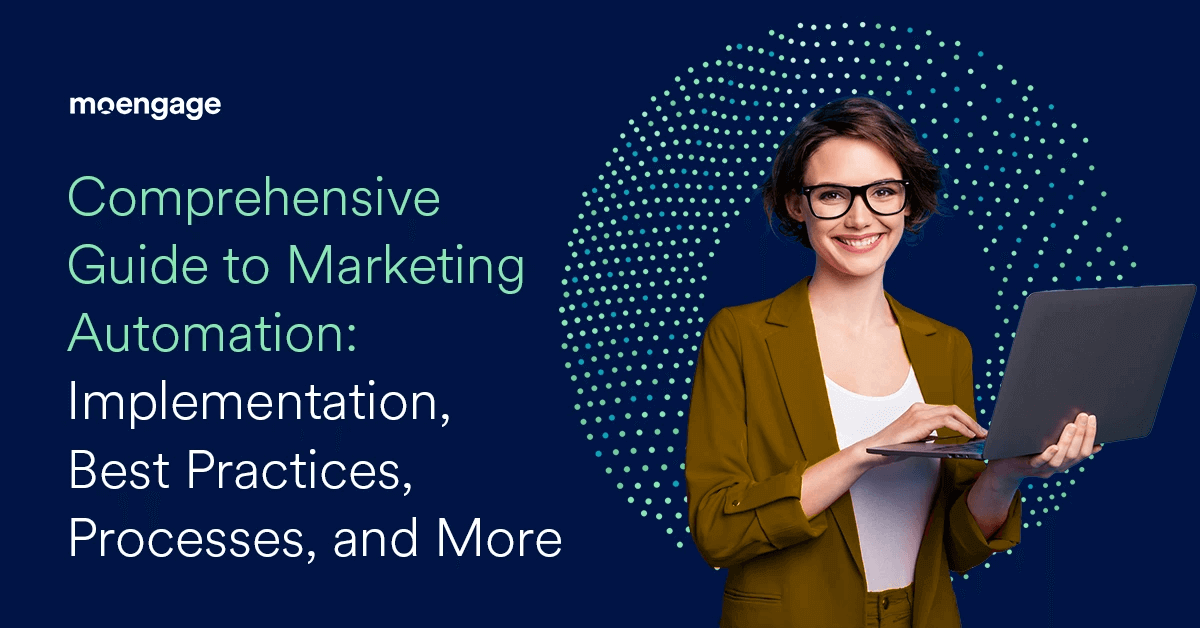
Reading Time: 20 minutes
A (Busy) Day in the Life of a Marketer
It’s a warm, sunny day. You’ve decided to finish work on time and go for a rejuvenating walk outside. Determined, you open your laptop and see your calendar full of meetings with different teams. Your meetings start from 9 a.m., stretching all the way to 5 p.m., with your work targets squeezed somewhere between the huddles, including email campaigns for acquisition, social media posts for brand awareness, and personalized marketing campaigns for your customer retention strategy. As an all-around, customer-centric marketer, you also make it a point to go to your customer relationship management team to understand the customer journey better and gather customer data to optimize your marketing efforts. In all this, you see the possibility of your walk swiftly fading away with the sunlight.
Taking on all these tasks all day, every day, is a surefire way to crippling burn out.
If only there was a simple fix to this.
The Simple Fix to a Marketer’s Burn Out
What if we told you, there’s a fix that will help you automate repetitive tasks, carry out lead generation activities across different marketing channels, gather and unify data to help you run personalized marketing campaigns with relevant content, and manage cross-channel customer communications to increase customer loyalty – all without having to hire an expensive marketing agency?
What’s the fix you ask? Marketing automation!
The Secret to Effortless Marketing: Marketing Automation
Marketing automation refers to utilizing technology and automation tools built to help you tackle repetitive tasks in your marketing strategy. It helps marketing teams by removing manual intervention from tasks like lead generation, email marketing, social media marketing, customer lifecycle management, customer retention, etc. Automation tools help the marketing team engage with customers through various channels, optimize campaign management, and effectively run marketing programs to then fuel a consistent inflow of leads to the lead funnel.
The sole purpose of marketing automation tools is to generate more revenue for the brand. Automation tools do this by taking over mundane tasks and freeing up bandwidth for you to take on more strategic marketing exercises.
The Rise of Marketing Automation Tools – Trends and Statistics
If you’re stuck in the never-ending loop of chasing leads just for your sales team to tell you they aren’t qualified leads or are struggling with running digital marketing campaigns to engage with customers across different marketing channels, or are overwhelmed when you have to analyze loads of marketing data, a marketing automation software is the assistant you need to hire.
Intelligent marketing automation helps you nurture prospects who are likely to buy from you, engage with them through a multichannel customer journey and measure the effectiveness of the campaigns you’ve run for different customer segments, thereby directly impacting the brand growth.
| Let’s look at some statistics to firm up your faith in the power of marketing automation software.
|
Now that you believe in marketing automation and the boost it will provide to your marketing strategy, let’s delve deeper into specific use cases.
The Swiss Army Knife of Marketing: Must-Have Features in an Automation Software
Marketing automation features could significantly impact multiple aspects of the marketing and sales teams and how they work. Most marketing automation tools are packaged as a set of features built into one solution. The expansive set of features and capabilities may vary when different players are compared, but you can expect every marketing automation solution to have the following features:
A. Lead Management
Every marketing department is tasked with identifying potential customers, unifying lead information in one place, and effectively nurturing them, to finally lead them to a purchase. This activity is a big part of the marketing tasks marketing automation systems can support marketing teams with.
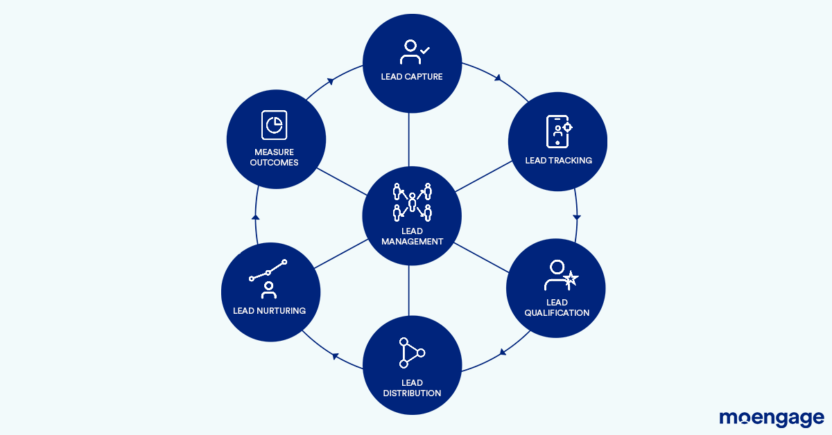
Lead management is a fundamental feature almost every marketing automation tool offers, it includes:
A.i. Lead Generation
The first step to nudging potential prospects down the lead funnel is to get them interested in your product or offering and take the first step in connecting with you. This happens when the prospect interacts with one or more of the different campaigns you’ve launched for different channels.
A marketing automation tool can help you gather prospects and insights from different sources, like your website, social media, email, etc., in one place to build a holistic database for you. It helps you bring together all your data from online and offline channels to create a 360° view of your customer. Get your insights into traffic sources, POS data, and campaign trends in one dashboard. Empower your teams to create successful campaigns that drive more results and optimize CLTV.
A.ii. Lead Tracking
Capturing lead details is only the first step of your marketing processes, the next is to understand their journey with your brand. Lead tracking is another central aspect of marketing automation, which helps you measure and analyze activities like:
- Website pages visited by your customers. This will help your marketing team determine their interests and intent to further personalize engagement and marketing campaigns. These insights can also help you build highly effective account-based marketing strategies.
- Open rates and click-through rates for your email marketing efforts so you can optimize and improve marketing efficiency.
- Which marketing channel is the lead most responsive on? Is it your email marketing, social media marketing, website, or WhatsApp?
A.iii. Lead Scoring and Qualification:
67% of sales are lost due to improper lead qualification. To ensure marketing success, it is vital that you pass on to sales those leads that have a clear intent to buy.
How do you determine which lead is absolutely ready to purchase vs which ones are just browsing? A good marketing automation software will help you score and capture leads based on intent to buy, as well as fitment, helping you focus on the most viable prospects, And retaining scores for the others so you can engage with them and remain top of mind for when there is a high intent to purchase.
A.iv. Lead Distribution:
As a brand scaling up constantly, you’d also see high lead inflow. Your marketing automation strategy needs to account for this and ensure the right lead reaches the right member, in real-time, so the conversation can be taken forward and the prospect can be moved further down the sales funnel.
Good marketing automation tools can help you determine which lead should be assigned to which sales rep, based on a logic you’ve defined.
A.v. Lead Nurturing:
While acquiring the lead is half the battle, it’s only that. A half. Most brands have a myopic focus on acquisition instead of a balancing focus on acquisition and retention. As per our recent “Customer Retention Benchmarks Report 2023“, most brands lose 31% of their acquired customers on Day 2 of the customer installing the app.
This could be because once the prospect becomes a customer, personalizing their experience becomes less of a priority.
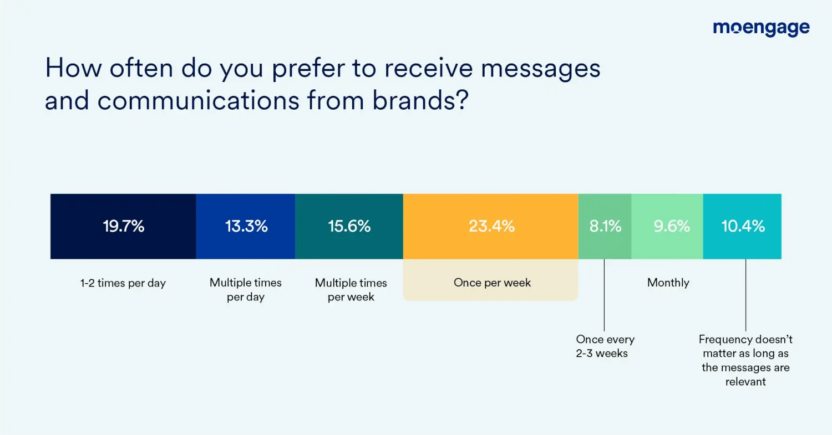
Sending one or two email campaigns every month or inconsistent social media marketing campaigns just won’t cut it anymore.
23.4% of the consumers surveyed in the report “Personalization Pulse Check 2023” state that they’d want to receive communication from brands atleast once every week. In addition to this, 86% of shoppers regularly channel-hop across two channels. The writing on the wall is clear – to get valuable, relevant leads, you have to woo them, engage with them, nurture them, and keep them interested in your brand for a long time. Marketing automation helps you send them personalized marketing campaigns through the right channels to keep you top of mind when they’re about to buy.
B. Landing Page and Form Creation
Many marketers use marketing automation to create landing pages for new product launches, company updates, events, and much more. Landing pages are the perfect mid-ground between a full-blown website and a targeted social media post. They help you focus the attention of the prospect where you want and streamline their journey.
Landing pages aren’t just window displays to make your brand look good, they’re a doorway to bring high-intent leads in.
A marketing software that helps you automate your landing pages helps get rid of most manual intervention in tasks like:
- Data and contact entry
- Sending emails
- Sending landing page offers to your contacts one by one
- Creating specific workflows for contacts
- Adding contact tags and segmenting contacts
Marketing automation technology specifically designed to help you with landing pages and forms, help you pick from predesigned templates so you don’t have to spend too much time or effort coding these from scratch. Once you’ve created a landing page, you can then integrate it with your email marketing or your marketing automation tools to create a seamless journey for potential customers and move them further down the sales funnel.
C. Email Marketing Automation
98% of email consumers check their inbox every day, and 58% do it first thing in the morning, as per the Email Benchmarks Report that analyzed over 10.9 Billion emails. Email marketing has been and always will be one of the most lucrative engagement channels for marketers.
That said, as a brand looking to quickly scale, you’d want to use your resources in finding strategic opportunities to grow business, rather than creating emails from different segments every week.
Email marketing automation is the process of using a set of predefined rules to trigger emails based on actions customers or prospects take or sometimes, don’t take!
What can an email marketing automation tool help with?
C.i. Set the right first impression:
As a marketer, if you have leads signing up and not returning, the right set of emails can help! Setting up effective email onboarding campaigns can motivate your customers to stick around long enough to realize the value your offering adds to their life.
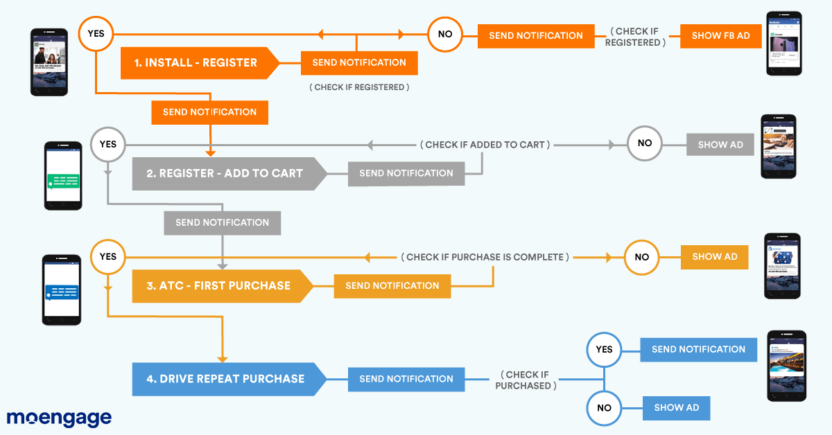
A well-conceived onboarding flow, like the one Tokopedia built, could start at email and span across different channels to reach your customers wherever they are in the most efficient way possible.
C.ii. Onboard, Personalize, Engage, Repeat:
Customers love a brand that truly gets them! Personalization is a customer-centric brand’s way of showing their customers how well they know them. Email automation helps you build, personalize and optimize email campaigns that display on every device, perfectly!
It helps you personalize messaging based on the customer lifecycle stage, their activity, inactivity, behaviour, engagement scores and a lot more. It also aids in optimizing your email layouts, testing which subject lines work the best and which content drives the most engagement.
C.iii. Improve Retention Rates:
Email campaigns help keep your customers engaged with you throughout their journey. Setting up email workflows to trigger personalized emails at the right moment of customer lifecycle will help you retain customers and upsell. These tools can help you build relevant segments based on data and then facilitate automating emails based on behavior, transactions, date, segments, and a lot more.
D. Omnichannel campaigns
A study by Interacting Advertising Bureau (IAB) showed that consistent messaging across multiple channels could increase the purchase intent of consumers by 90%. In addition to helping with the creation of a 360-degree customer profile, a marketing automation tool also helps with engaging with customers through every channel they’re present on.
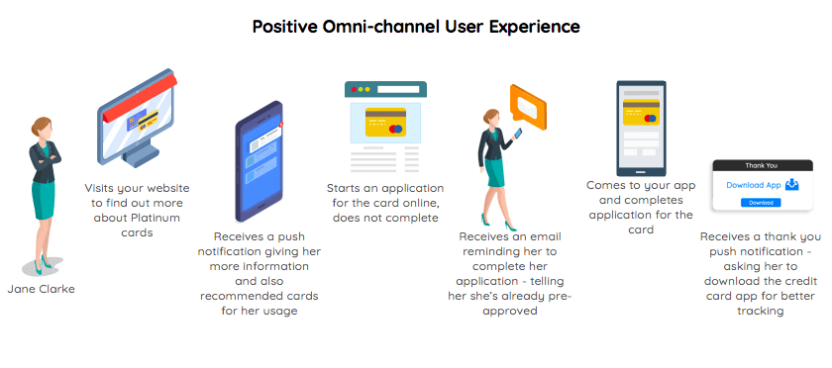
In the truest sense of the word, omnichannel engagement means providing a seamless brand experience and communication across channels (Email, SMS, Push Notifications, website, in-app and offline). A marketing automation platform can help you integrate all your marketing processes so you can run consistent campaigns across various channels. 
Most leading brands across all industries are focused on building an omnichannel engagement strategy due to the positive impact it has on customer engagement, retention, sales, and revenue. Here are some examples of leading brands changing the game with their omnichannel strategies:
Sephora – The Makeup and the omnichannel engagement expert
This brand has been a feature on most “Best Omnichannel Engagement Campaigns” lists and for a good reason. They seamlessly integrate their online and in-store experience. While the physical store is well known for well-informed staff providing beauty tutorials, they make their online space consumer friendly with personalized recommendations and free trials.

Customers are able to use their Beauty Bag accounts to analyze of their purchases (“What color was that lipstick again?”), scan items while they are in the store, see tutorials, maintain a wish list, and so on. Offering this experience to their customers has helped this #1 beauty retailer to gain approximately 100% increase in mobile orders.
Revolut acing Omnichannel Engagement
Omnichannel engagement, isn’t limited to just retail and E-commerce. Most current banks realize that their customers expect brands to put their convenience first, and be available at every touchpoint. Revolut, the global financial super-app with more than 20 million customers worldwide and over five million in the UK, understood this when they launched their omnichannel strategy. The brand launched a campaign in 2022 titled “Your Way In”, to show customers how they can break into previously closed-off worlds of money.
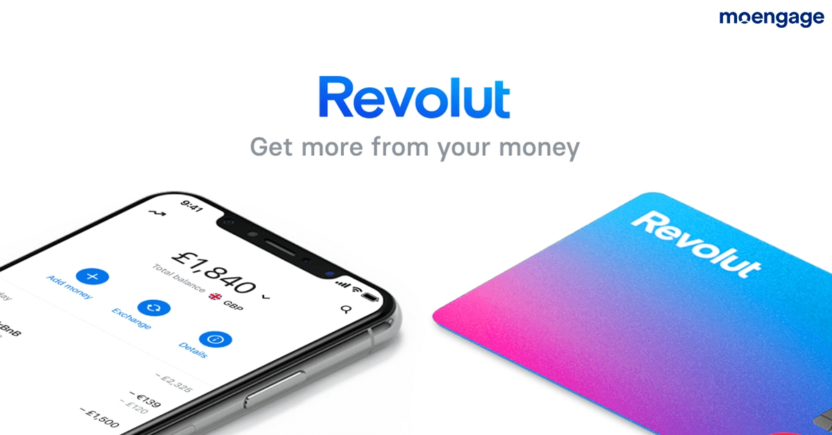
The brand launched an omnichannel engagement campaign with a presence on linear TV, digital TV, OOH billboards, digital marketing channels, podcasts, and social media. This campaign included launching a user-friendly app, providing personalized recommendations, and incentivizing with offers and discounts.
Spotify’s Omnichannel Strategy Charting “Top 10”
Spotify is another prime example of a well-executed, omnichannel engagement strategy . They not only offer a user-friendly mobile app but also a website and desktop app, that all syncs to show you your playlist and the song that was playing on one channel when they’re all opened together.
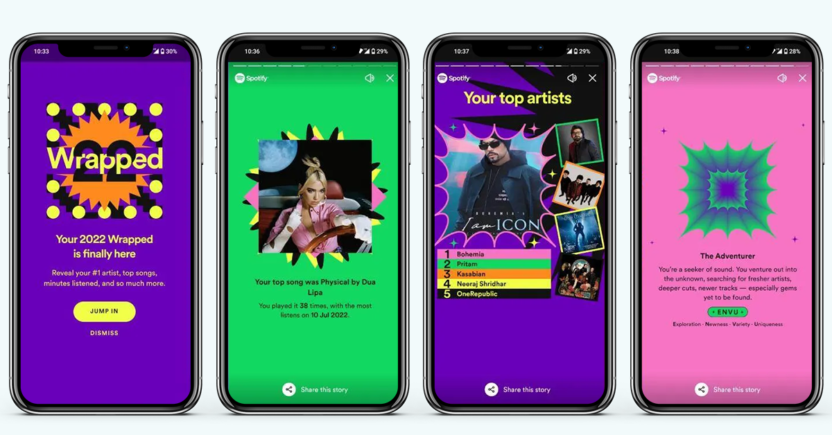
The brand also leverages influencer marketing and user generated content on social media to increase engagement.
E. Segmentation
The success of every marketing and engagement campaign depends on the marketing automation tool’s ability to accurately segment and micro segment your database.
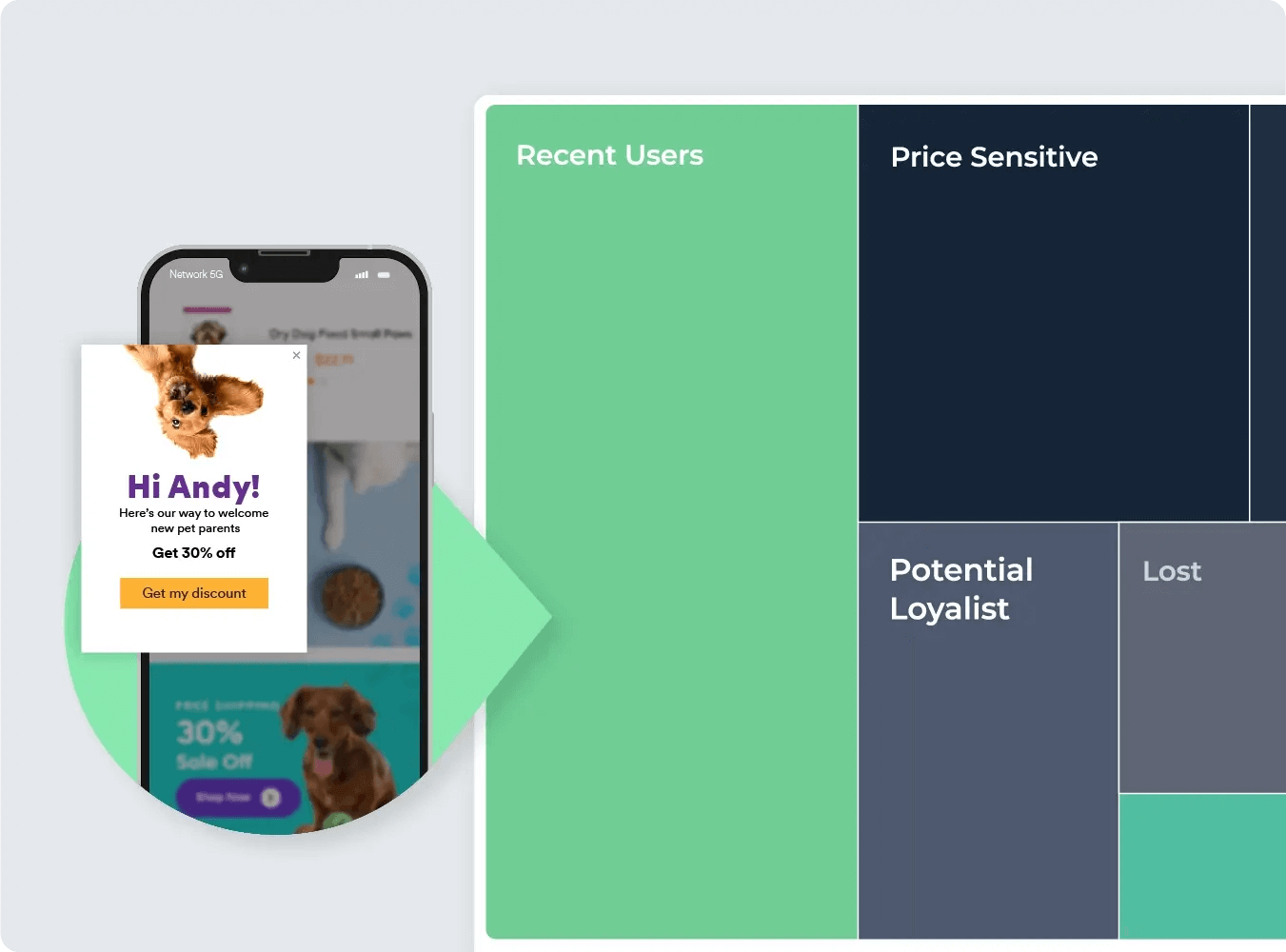
These segmentation filters could be based on customer behavior, affinities, RFM (Recency, Frequency and Monetary value of the purchase), demographics, and more. Here are some examples of segmentation logics your marketing automation tool can help you with: high-score leads in a certain region who visited your website in the last month; contacts for active opportunities who registered for an upcoming webinar; or prospects who received an email offer and didn’t click through but visited your website anyway.
F. Personalization
We’ve established that irrelevant communication is something the 21st-century customer doesn’t tolerate. In fact, generalized, irrelevant communication does more harm than sending no communication at all. The key to effective B2C personalization is segmentation.
Most brands have basic customer segment personalization based on demographics and properties like geolocation, gender, age group, or mobile OS.
More advanced and intuitive automation tools help brands segment based on recency of interaction with your app or website, frequency of the customer interaction as well as how much they spend with you (RFM segmentation). These tools also help you segment based on affinities, this kind of segmentation allows you to group together, customers with dominant preferences around brand/category, time, or usage help you to establish an effective match between products and the most receptive set of customers.
The idea behind segmenting customers is to provide a personalized experience instead of generic and spammy communication. As a B2C marketer, you can create advanced segments by taking into consideration both demographics and the behavior of your customers.
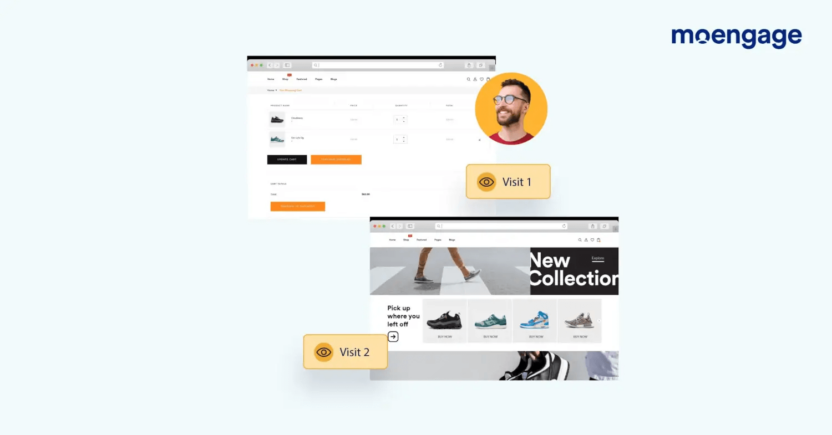
Effective marketing automation helps you build a unified customer profile and build omnichannel campaigns that are highly relevant to every customer. It helps you:
- Analyze the customer’s behavior at every stage across platforms
- Build a path to engaging experiences with user paths
- Personalize messages with dynamic content
- Convert anonymous website visitors to customers
G. Analytics and Dashboards
Marketers now aim to personalize every interaction for their customers. To be truly relevant to every customer in their database, brands must be able to stay with them throughout the customer journey and know the history of the relationship each step of the way. This means that your marketing tools and your analytics tools must not just talk to each other; they must work as a single unit.
When we look at the Martech setup for different brands today, the major focus seems to lie with campaign execution, while analytics tools only come in for measurement. In addition to this, we see marketing teams having to switch between multiple marketing automation and analytics tools or follow up with various teams in order to gather data, measure impact, and launch campaigns. This process is not only time-consuming and resource-draining but also has brands running campaigns on guesswork, which may, in turn, cause them to lose their customers.
The best marketing automation software in the market will help you look at data to find out how the product is performing and how customers are interacting with your brand. You can initiate a campaign right there with a message tailored specifically for that user segment. While point solutions will help you with reports for just those specific channels, an automation platform onboarded with the aim of integration with your tech stack can help you get reports around customer journey, their behaviour, attributes and much more. All this across channels, both online and offline.
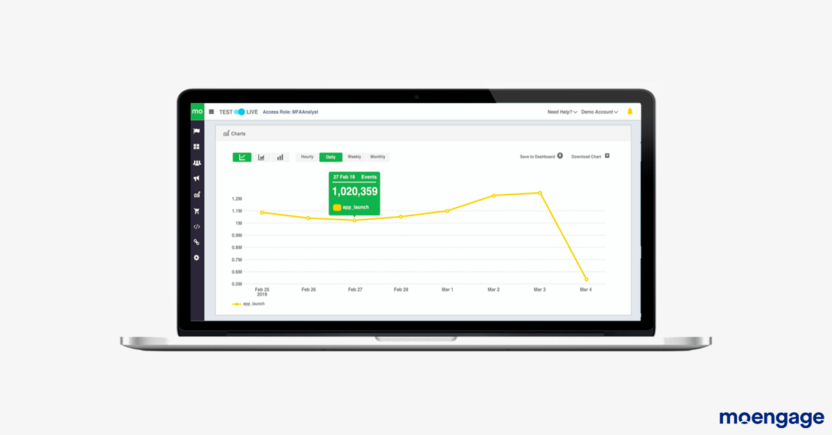
What can a marketing automation tool with built-in analytics do for your brand?
- Understand customer preferences with behavioral analytics
- Predict app churn and increase retention
- Understand customer conversions better with in-depth marketing funnel analysis
H. Workflow Automation
Throughout the customer journey, as a customer-centric brand, you’ll need to perform certain activities to onboard, engage, and retain your customers. You can either execute each activity manually for every new customer or put them on autopilot. Omnichannel Marketing Automation Workflows help you with the latter.
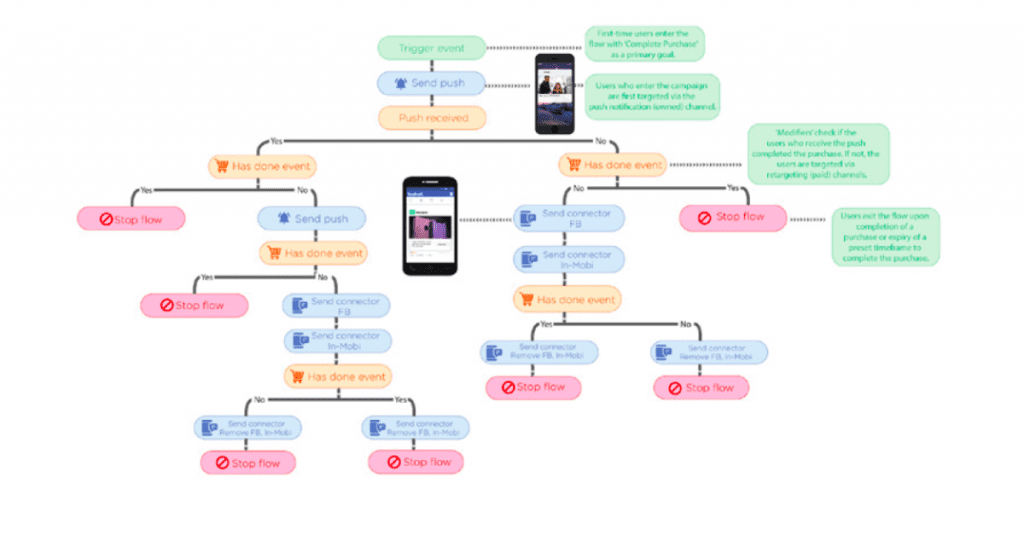
Instead of following each customer throughout their journey and engaging them with several disparate, one-off messages, you can create robust Flows that work according to predefined logic.
This creates a self-sustaining customer engagement engine. Here’s an example of an onboarding workflow.
I. A/B Testing
We’ve already established that “gut feeling” and “guesswork” are harmful for a brand’s health. Most marketers A/B test their campaigns, but best-in-class marketing automation helps you with dynamic A/B testing.
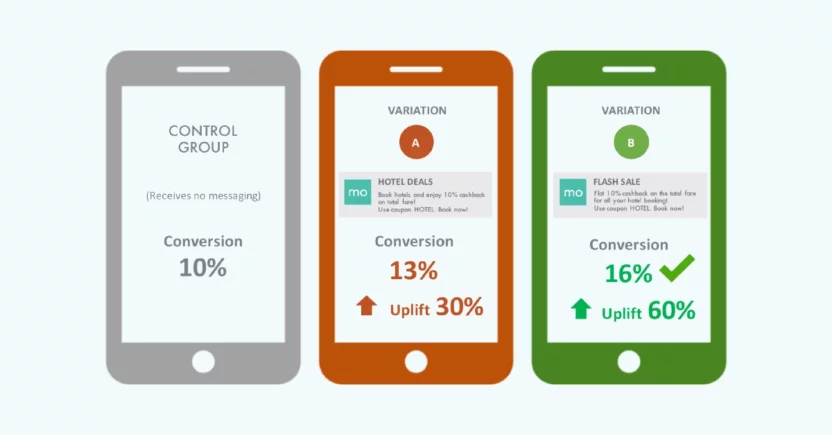
Taking automation to the next level, a marketing automation tool can learn the performance of each variant on the fly by registering customer interactions, and use the learnings to automatically drive traffic towards top-performing content. These tools eliminate the need for the marketing team to analyze and choose manually.
Does a Marketing Automation Platform Integrate with Other Tools?
Most brands today already have point solutions in place to cater to different functions and activities. The point vs integrated solution dilemma is a constant dilemma that we’ll get into some other time, but building a holistic marketing automation tech stack doesn’t require you to replace all of the tools you may already have in place. An effective marketing automation or customer engagement platform is one that works together with the tools you may already be using instead of replacing them.
Let’s look at how a marketing automation platform can work together with different marketing tools like a CRM, CDP, or measurement platforms.
A. When Sales Meets Marketing: The CRM-Automation Love Affair
While CRM platforms provide huge value to a sales team, it proves to be somewhat limited in its functions for marketing. Marketing automation solutions have different levels of integration with CRM systems. Although some require manual mapping of fields, others map automatically and maintain the connection as time passes. Some synchronize information in near real-time—and others, less often. Some provide access primarily to lead and contact information, but others also provide access to opportunity and custom objects. CRM integration is a particularly complex area with high variance among solutions, so it’s worth taking the time to understand your needs and your vendor’s capabilities.
B. Acing the Data Game: CDP + Marketing Automation
Customer data platforms facilitate the collection of customer data from multiple sources and collate all data about one customer together to create a unified customer profile. This means that a customer’s data from the social media platform and their privacy preferences from the compliance management tool would be put together in one place, along with their CRM data, event marketing data, and paid advertising data.
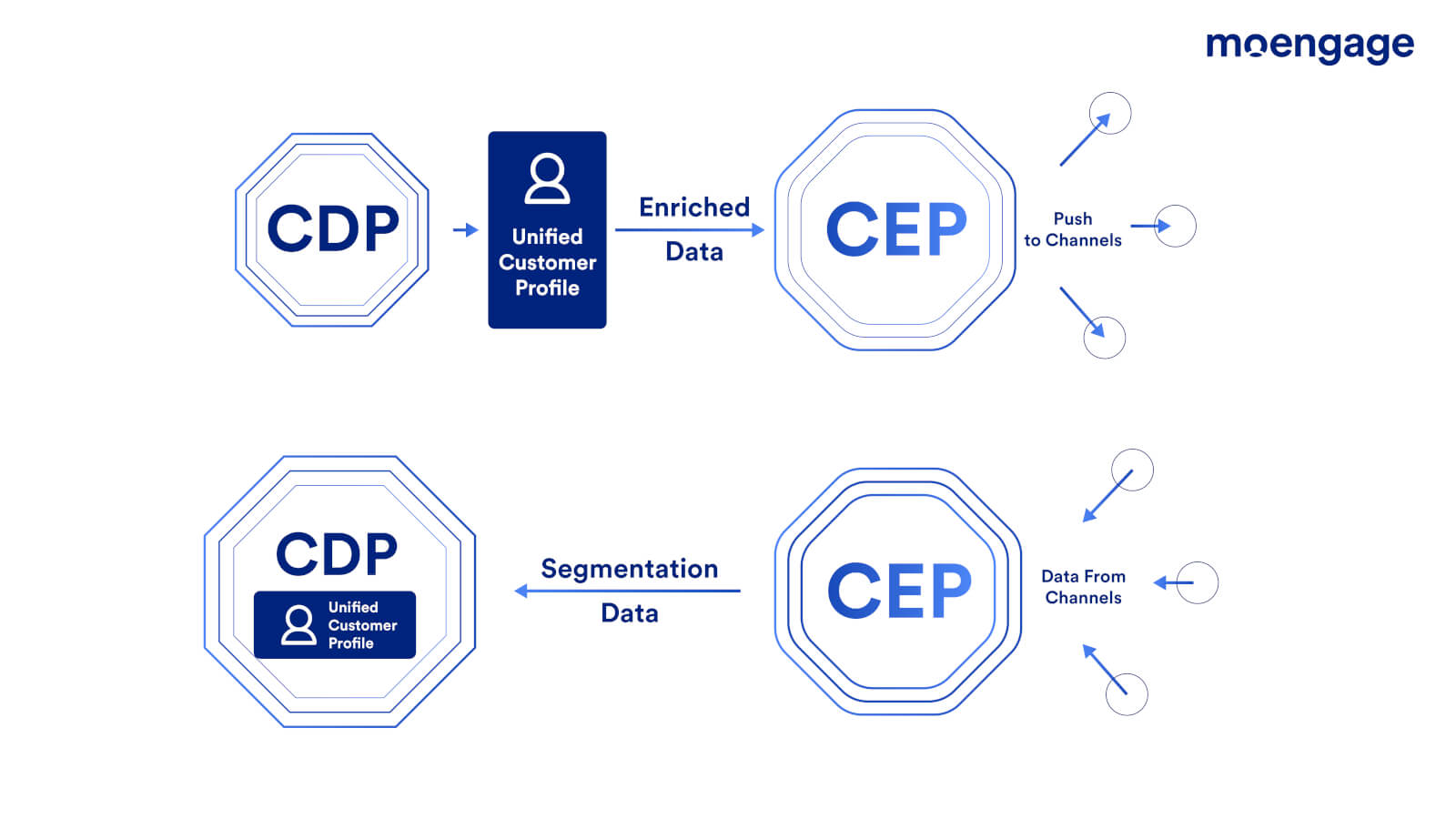 The CDP then combines these data points to build out a unified customer profile. This profile can then be accessed by any of the platforms connected. CDPs collect data directly from the source – this can be transaction data, external systems data, customer identity resolution data, or other customer data records – and create a unified customer profile.
The CDP then combines these data points to build out a unified customer profile. This profile can then be accessed by any of the platforms connected. CDPs collect data directly from the source – this can be transaction data, external systems data, customer identity resolution data, or other customer data records – and create a unified customer profile.
Marketing automation tools like a CEP can access this unified customer database to understand what each customer likes or dislikes and what works for them across multiple systems to create more personalized marketing campaigns and a consistent customer experience.
C. Measure Up Against Your Competitors: MMP + Marketing Automation
MMPs, or Mobile Measurement Platforms, are primarily known for being unbiased third-party platforms that help clients keep a tab on conversions and attribute them correctly. MMPs collect, organize, and attribute app data to provide clients with metrics on campaign performance. This is enabled via the MMP’s SDK, which collects the attribution data to connect engagements with installs and post-install in-app events.
By feeding MMP data into a customer engagement platform, you can build audiences and segments to generate customer insights, implement omnichannel communication and personalization that engage the right customers with the right messaging (a great tool for retention), and ultimately build customer journeys that provide your segments with experiences that convert.
D. Taking an Informed Decision for Your Brand: Product Analytics Platform + Marketing Automation
Product analytics platforms help brands use their customer data to build great product experiences for systematic business growth.
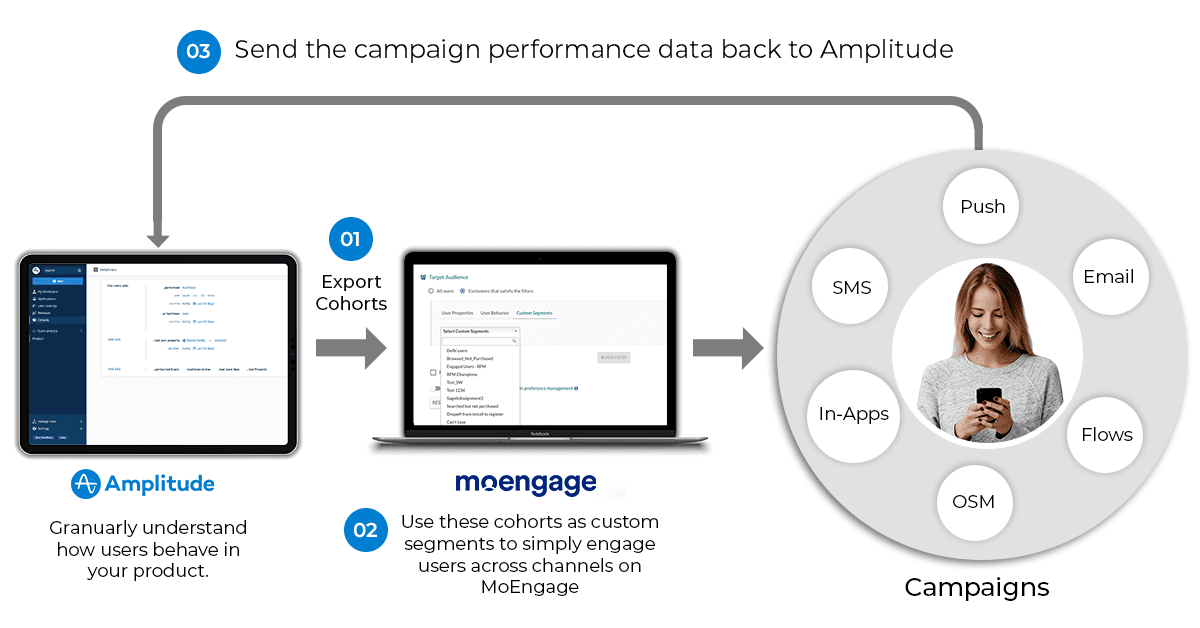
A marketing automation platform like a customer engagement platform can help you use the data on how customers behave in your product and then build cohorts using this data to then engage with them across channels.
Building a Winning Business Case For Marketing Automation
Now that you’re convinced Marketing Automation is for you, the next step is to convince various internal stakeholders of the potential ROI it brings in. The data speaks for itself! Funnel Overload reported the following findings on the effectiveness of using marketing automation:
• 76% of organizations that use marketing automation earn a return on their investment in their first year, with 12 percent earning returns in less than a month
• 80% of companies earn more leads with marketing automation than they can without it, with 77 percent of marketers reporting increased conversions
• 15 to 20% of leads convert into sales when marketers use automated lead nurturing
The data shows that automated marketing processes definitely have huge benefits, not just for eliminating repetitive tasks but also for revenue. However, you may still need to sell it to your C-suite. To do this, just talking about the benefits of marketing automation may not be enough. Here are some steps you can take to get your stakeholders ready to evaluate marketing automation platforms and choose what fits your brand best!
Step 1: Outline your goals
Think about what goals you want to achieve by onboarding a marketing platform and how you’d want to optimize your automation strategy. Start documenting these. Some examples of these could be:
- I want my marketing automation system to help build a personalized omnichannel strategy
- I want to streamline social media management and explore social media automation
- I want to personalize my website experience to convert anonymous website visitors into customers
- I want to automate email campaigns and integrate other tools I use for running engagement campaigns across WhatsApp, In-app notifications, and more.
- I want to move beyond demographic segmentation into more advanced segmentation
- I want to eliminate the repetitive tasks my team performs on a daily basis, like building landing pages and forms from scratch
Step 2: Set some concrete KPIs to measure the impact of your marketing automation strategy
Marketing automation lets you put a lot of marketing campaign-related activities on autopilot, but it is vital to show how this project impacts the goals that’ll help your brand grow.
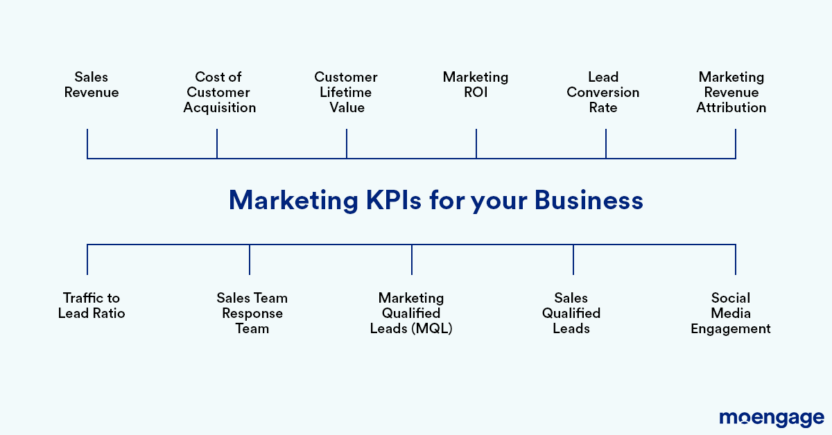 A few KPIs most teams use to make a business case for marketing automation include:
A few KPIs most teams use to make a business case for marketing automation include:
- Sales Revenue: The ultimate end goal for this automation project, more often than not, is how it impacts the opportunities sales is able to close and win! It’s vital to understand if this project is able to increase the number of new customers sales is able to bring in.
- Cost of Customer Acquisition: This cost indicates the amount your brand spends on average to bring in a new customer.
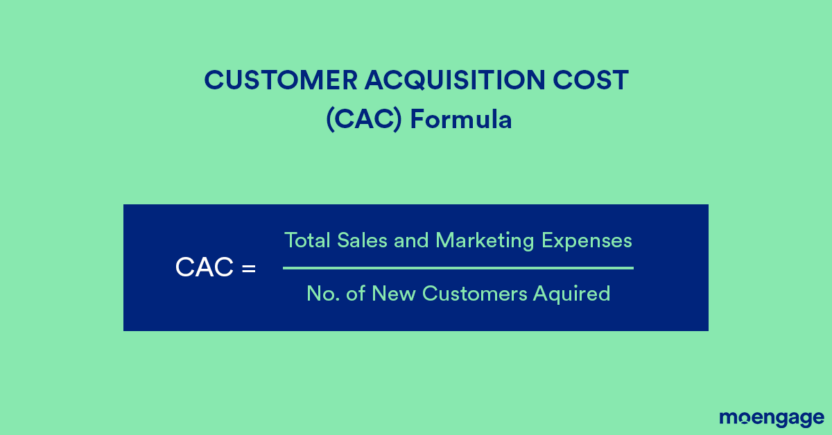
CAC is indicative of the resources and cost incurred to acquire new customers, thereby measuring the value new customers bring in.
3. Customer Lifetime Value: Customer Lifetime Value is the value of a customer over the duration of their relationship with the brand. 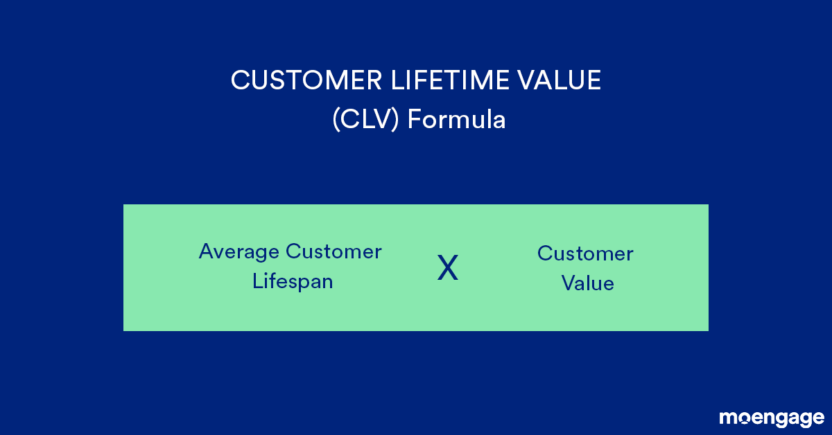 This is one of the most important metrics for a brand as it helps them sustain growth and scale up.
This is one of the most important metrics for a brand as it helps them sustain growth and scale up.
4. Marketing ROI: Marketing ROI revolves around attributing profit and revenue impact to marketing initiatives. This helps brand marketers measure the effectiveness their campaigns have on the overall revenue and growth of the brand.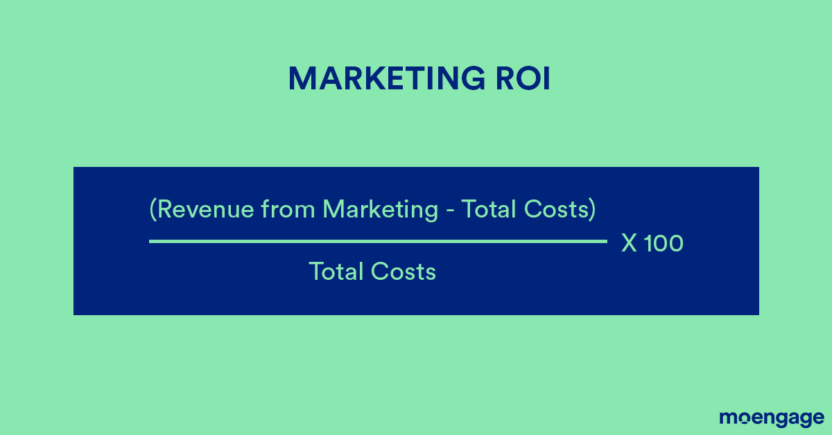 This metric is often used to justify marketing spends and allocate budget for future initiatives.
This metric is often used to justify marketing spends and allocate budget for future initiatives.
5. Lead Conversion Rate: Lead Conversion Rate refers to measuring the impact of marketing and sales activities in converting leads into customers.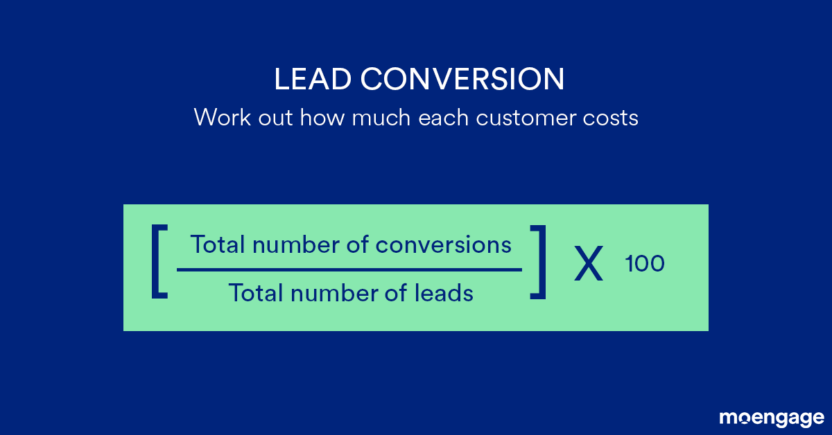 This metric helps you calculate the percentage of leads that have taken the action you’ve set as the ideal one. This could be making a purchase, completing KYC and onboarding processes, or signing up for a paid subscribtion.
This metric helps you calculate the percentage of leads that have taken the action you’ve set as the ideal one. This could be making a purchase, completing KYC and onboarding processes, or signing up for a paid subscribtion.
Step 3: Build a Marketing Automation Checklist
This checklist should cover every functionality and capability to run current and future campaigns.
Here’s an example of the capabilities your automation software should have. You can find a detailed list of capabilities you should look for in our Definitive Buyer’s Guide To Customer Engagement Platform.
Step 4: List down and Compare your options
Once you’ve listed down the capabilities and goals, the next step is to list down potential vendors and map their offerings to your functionality expectations and choose your recommendations for the best fit.
4 Examples of Brands Using Marketing Automation
You have a must-have feature list, you have statistics to prove the difference marketing automation can make, and you have a template to build a business for this project. The one thing to power-up this kit would be real world examples of the results marketing automation has brought in top global brands. Let’s take a look!
1. How Airtel Wynk Music Reactivated 44% of Dormant Customers Using Automated Segmentation
| The Business Challenge | How Marketing Automation Solved it |
| The Growth team at Wynk observed the streaming behavior on their mobile app and realized that a significant percentage of customers who stream music regularly have a tendency to go dormant until there is a new music album or a movie that is released. | The Growth team at Wynk utilized the MoEngage’s to automate:
|
The Result Airtel Wync Music Achieved
2. Spielworks Sees a 200% Growth in Revenue With Insights Gained through Marketing Automation
| The Business Challenge | How Marketing Automation Solved it |
| To sustain a growth in customer base from 1 million to 3 million, they wanted to find a customer engagement platform that kept customers informed on products and community initiatives, automated campaigns and journeys to deliver personalized content based on each customer’s behavior. | The Spielworks team onboarded MoEngage to automate:
|
The Result Spielworks Achieved
3. How Oswald, a Unilever Brand, Uses Automation to Power Omnichannel Engagement
| The Business Challenge | How Marketing Automation Solved it |
| Oswald was committed to buildinga seamless omnichannel strategy spanning across online and offline channels. They also wanted to onboard a platform that helped them build holistic unified customer profiles. | The Oswald team onboarded MoEngage to automate:
|
The Result Oswald Achieved
4. Sweatcoin Observes a 15% Uptick in Customer Retention Using Advanced Analytics
| The Business Challenge | How Marketing Automation Solved it |
|
Sweatcoin observed that it did not tailor its overall customer engagement strategy to customers’ preferences and affinities. The main reason is that the brand manually sets up all customer engagement campaigns (from writing messages to building workflows). |
The Oswald team onboarded MoEngage to automate:
|
The Result Sweatcoin Achieved
With the plethora of options available and questions to tackle, it’s easy to lose yourself until you know exactly what you’re looking for. In this blog, we’ve aimed to provide you with this lens in the form of a functionality checklist, a business case framework, and statistics to help make choosing easy for you.
This, combined with advice from real-world marketing experts, will help you charter a course to selecting the platform best suited to your brand.














